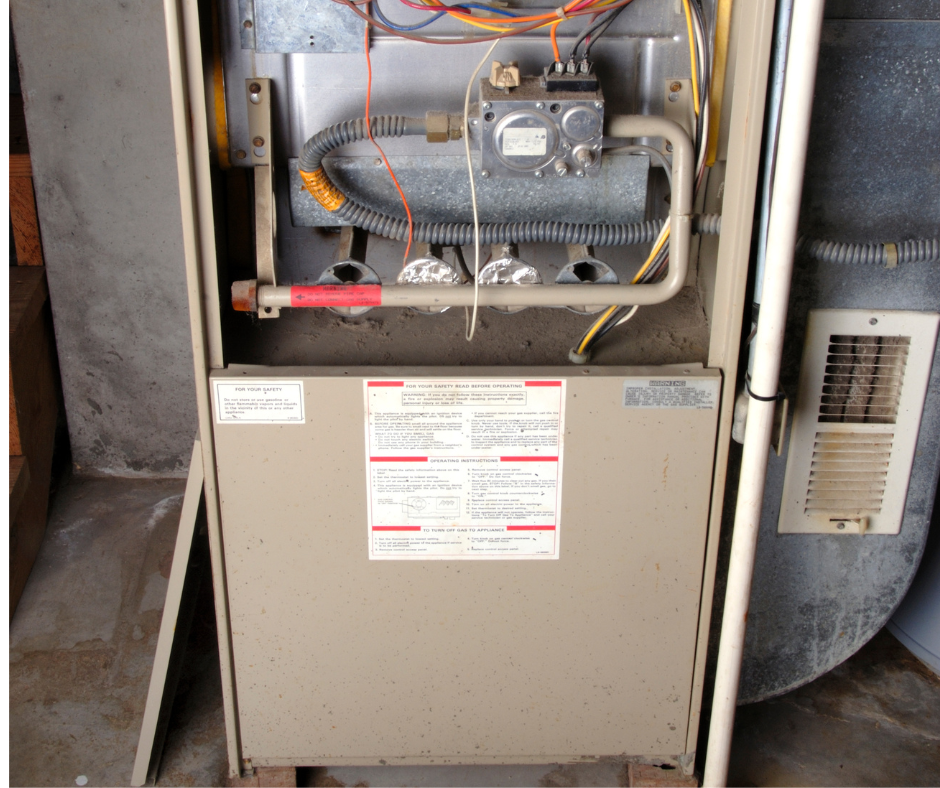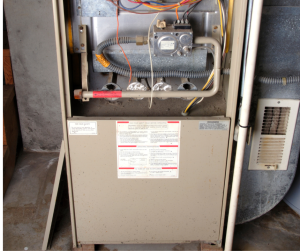My Furnace is Leaking Water
- April 13, 2024
- Posted by: Atel Air
- Category: Home, Home Comfort, HVAC System Advice

 Are you experiencing an unexpected issue with your furnace leaking water? Don’t worry, you’re not alone. This is a common problem that many homeowners face, and it can be quite alarming if you’re not familiar with how your furnace works. As HVAC techicians, we’ve seen our fair share of furnace problems, including furnace leaking water. In the paragraphs below, we’ll explore the possible causes of a leaking furnace and provide you with the information you need to take action.
Are you experiencing an unexpected issue with your furnace leaking water? Don’t worry, you’re not alone. This is a common problem that many homeowners face, and it can be quite alarming if you’re not familiar with how your furnace works. As HVAC techicians, we’ve seen our fair share of furnace problems, including furnace leaking water. In the paragraphs below, we’ll explore the possible causes of a leaking furnace and provide you with the information you need to take action.
Identifying the Source of the Leak
Identifying the source of the leak in your furnace is a crucial first step towards solving this perplexing issue. Begin by examining the area around your furnace. Is the water pooling directly beneath it, or can you trace the moisture back to another component of your heating system? Sometimes, what appears to be a leak from the furnace might actually be coming from nearby pipes or even a humidifyer.
Look for any obvious signs of condensation on the furnace or surrounding pipes. High-efficiency furnaces, for example, produce condensate that could be the culprit if the lines are clogged or leaking. On the other hand, if you have a conventional furnace, check the metal exhaust pipe for signs of condensation which might be contributing to the leak.
It’s also important to consider the timing of when the leak occurs. Does it happen while the furnace is running, or does it seem to be a constant drip regardless of the furnace’s operation? This can provide valuable clues. A leak that only occurs during operation might suggest issues with internal components like the heat exchanger or a condensate pump failure in high-efficiency models.
High-Efficiency Furnaces and Condensate Issues
High-efficiency furnaces are marvels of modern heating technology, designed to keep your home cozy while optimizing energy use. A key to their efficiency is how they handle moisture—specifically through the condensate lines. These specialized lines play a crucial role by whisking away the water vapor that’s a byproduct of the heating process. However, they’re not immune to issues. Sometimes, you might find that these lines become clogged or even start to leak. This doesn’t just mean a puddle on the floor; it can signal that your furnace isn’t running as efficiently as it should be, potentially leading to bigger problems down the road.
It’s important to catch and address these issues early. A clogged line can often be cleared with a bit of know-how and some basic tools, while a leak might require replacing parts of the line. Both are key to ensuring your furnace continues to operate smoothly, keeping your energy bills in check and your living spaces comfortable. Regular checks of your condensate line, especially before the cold season kicks in, can save you from unexpected surprises. Remember, high-efficiency doesn’t just mean more comfort with less energy—it means being proactive about maintenance. Keeping those condensate lines clear is a simple yet effective step in making the most of your high-efficiency furnace.
The Role of the Condensate Pump in Preventing Leaks
High-efficiency furnaces often rely on a condensate pump to effectively manage and remove the moisture generated during the heating process. This little piece of equipment might seem insignificant, but it plays a pivotal role in keeping your furnace running smoothly and your floors dry. The condensate pump’s job is to collect and move the water to a proper drain, preventing it from pooling and causing leaks. When it’s working as it should, you’ll hardly notice it’s there—until it isn’t working, that is.
A malfunctioning condensate pump can be the source of those mysterious puddles you’ve been finding near your furnace. It’s something that can be easily overlooked, but should definitely not be ignored. Regular checks and maintenance are key to ensuring that this essential component doesn’t let you down. If you start to notice water accumulating, it’s a good indicator that your condensate pump might need a little TLC or possibly a replacement.
Dealing with Conventional Furnace Condensation
Conventional furnaces, while reliable and straightforward in their operation, present their unique challenges—especially when it comes to managing condensation. Unlike their high-efficiency counterparts that are designed to deal with moisture more efficiently, conventional units may struggle, leading to water leaks if not properly attended to. The primary suspect in these scenarios? The metal exhaust pipe. This component can generate condensation, particularly during colder months when the temperature difference between the indoor and outdoor air is significant.
Mitigating this issue begins with a closer look at your furnace’s exhaust setup. Ensuring that the exhaust pipe is properly insulated and ventilated makes a significant difference in reducing condensation buildup. Insulation helps maintain the temperature of the exhaust gases within the pipe, minimizing the chance of condensation forming. Similarly, good ventilation prevents moist air from becoming stagnant and condensing on cooler surfaces.
It’s also wise to inspect your furnace for signs of rust or damage, as these can exacerbate condensation problems by allowing moisture to collect more easily. In some cases, adjusting the slope of the exhaust pipe to promote better drainage of condensate can prevent water from pooling and, eventually, leaking out.
Taking these steps not only addresses immediate concerns with condensation but also contributes to the overall health and efficiency of your conventional furnace system. Proper care and attention to these details can ensure your furnace runs smoothly, keeping your home warm and dry through the winter months.
Regular Maintenance to Prevent Future Leaks
Staying ahead of furnace issues is key to ensuring a cozy, leak-free home, and regular maintenance plays a key role in this. Think of your furnace like a car; just as your vehicle needs routine oil changes and inspections to run smoothly, your furnace requires consistent check-ups to operate efficiently. An annual inspection by a qualified technician can pinpoint small problems before they turn into bigger, more expensive repairs. maintenance, you’re not just avoiding potential water issues; you’re also optimizing your furnace’s performance and energy efficiency, ensuring it keeps your home warm and inviting for years to come.
When to Call a Professional
While diving into a DIY fix can be both rewarding and effective for minor issues, there comes a time when enlisting the expertise of a licensed HVAC technician is the smartest move. If the leak’s origin remains elusive after your initial investigation, or if the fixes you’ve attempted don’t seem to stem the tide, it’s time to call in a pro.
Discovering your furnace leaking water? Stay calm and let us handle it! ATEL Air specializes in quickly and efficiently fixing your furnace woes, ensuring your family stays comfortable all year long. Trust ATEL, your local heating and cooling experts, for peace of mind. Contact us now – your home comfort is our priority!


